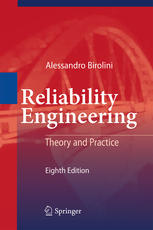

Most ebook files are in PDF format, so you can easily read them using various software such as Foxit Reader or directly on the Google Chrome browser.
Some ebook files are released by publishers in other formats such as .awz, .mobi, .epub, .fb2, etc. You may need to install specific software to read these formats on mobile/PC, such as Calibre.
Please read the tutorial at this link: https://ebookbell.com/faq
We offer FREE conversion to the popular formats you request; however, this may take some time. Therefore, right after payment, please email us, and we will try to provide the service as quickly as possible.
For some exceptional file formats or broken links (if any), please refrain from opening any disputes. Instead, email us first, and we will try to assist within a maximum of 6 hours.
EbookBell Team

4.7
36 reviewsThis book shows how to build in and assess reliability, availability, maintainability, and safety (RAMS) of components, equipment, and systems. It presents the state of the art of reliability (RAMS) engineering, in theory & practice, and is based on over 30 years author's experience in this field, half in industry and half as Professor of Reliability Engineering at the ETH, Zurich. The book structure allows rapid access to practical results. Methods & tools are given in a way that they can be tailored to cover different RAMS requirement levels. Thanks to Appendices A6 - A8 the book is mathematically self-contained, and can be used as a textbook or as a desktop reference with a large number of tables (60), figures (210), and examples / exercises^ 10,000 per year since 2013) were the motivation for this final edition, the 13th since 1985, including German editions. Extended and carefully reviewed to improve accuracy, it represents the continuous improvement effort to satisfy reader's needs and confidence. New are an introduction to risk management with structurally new models based on semi-Markov processes & to the concept of mean time to accident, reliability & availability of a k-out-of-n redundancy with arbitrary repair rate for n - k=2, 10 new homework problems, and refinements, in particular, on multiple failure mechanisms, approximate expressions, incomplete coverage, data analysis, and comments on ë, MTBF, MTTF, MTTR, R, PA.